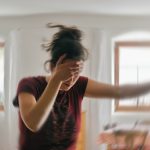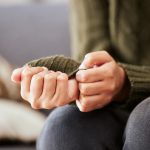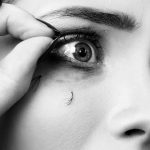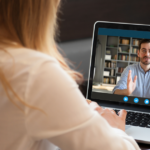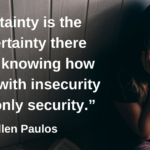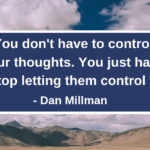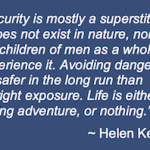Chanel Taghdis, LMFT, of the OCD Center of Los Angeles, discusses the efficacy of Exposure and Response Prevention (ERP) for OCD and related conditions when conducted via teletherapy.

The year of 2020 presented challenges that no one anticipated. A new and misunderstood virus created a world-wide pandemic resulting in shutdowns across the globe. Schools were closed. Restaurants and businesses were closed. Offices were closed. With social distancing becoming the new standard, employees transitioned to working from home. What did this mean for therapists and clients? A pause in treatment? Panic? Uncertainty? Maybe at first, but technology quickly came to the rescue. It is now 2022 and treating clients for a variety of mental health disorders online has become the new normal. At the OCD Center of Los Angeles, we have offered teletherapy for OCD and anxiety disorders for many years, but never at this magnitude. After two years of this transition, the question is: Is online therapy for these conditions as effective as face-to-face, in-person treatment?
What is teletherapy and how does it work?
Teletherapy is essentially therapy conducted over the computer using a webcam. It is the exact same treatment that is done with clients in person and the only difference is that it is done via camera. The platform we use for online therapy is very similar to Zoom, but it has a higher level of security meant for health care professionals. It includes multiple features and provides a sense of safety that the client’s confidentiality is protected due to the high encryption.
Is there any benefit to doing therapy online?
The current main benefit of doing therapy online is being able to receive the treatment you need without fear of a virus, especially for those who are immunocompromised. However, there are many other benefits as well. Online therapy provides people with easy access to treatment and some people have reported staying in treatment longer due to the convenience. It is easier to find a time that works for treatment when one is not worried about the commute, traffic, and parking. This is also helpful for people who live far away or don’t have a specialized therapist living in their area. All that is required is a quiet environment and a computer or phone!
What is Exposure and Response Prevention (ERP)?
Exposure and Response Prevention (ERP), which is a type of Cognitive Behavioral Therapy (CBT), is the gold standard treatment for OCD. When doing ERP, a client confronts their fear in a gradual manner (exposure) and does not engage in their usual compulsive or anxiety reducing behavior (response prevention). Some examples can include touching a doorknob without washing hands after, using the stove without checking if it is off again, driving without turning around to check if anyone was hit or reading about a triggering topic without seeking reassurance after. The possibilities are endless, and the hope is that by gradually exposing yourself to the fear, you will become less afraid or more tolerant of these fears over time.
At the OCD Center of Los Angeles, we treat all the following conditions online using ERP:
- Obsessive Compulsive Disorder (OCD)
- Pure Obsessional OCD (Pure O)
- HOCD / Gay OCD
- Harm OCD
- Scrupulosity OCD
- Relationship OCD (ROCD)
- Perinatal / Postpartum OCD
- Child and Adolescent OCD
- Body Dysmorphic Disorder (BDD)
- Hypochondria / Health Anxiety
- Social Anxiety / Social Phobia
- Panic Disorder
- Phobias
- Olfactory Reference Syndrome (ORS)
What these conditions have in common is that there is some obsession (a recurring thought, image or fear that is distressing or uncomfortable). The person then attempts to use compulsions as a response to these thoughts in an attempt to make the obsession go away or relieve anxiety. Compulsions can be observable behaviors, avoidance, reassurance seeking or mental rituals. Exposure and Response Prevention is ideal for these conditions because there are clear obsessions and responsive behaviors that are addressed in a structured format.
Is ERP effective/beneficial online?
Many studies have already proven the effectiveness of teletherapy. Research from Jeanine Turner, PhD, a professor of communication, culture, and technology at Georgetown University who has followed telehealth’s growth over the past two decades, has shown that both patients and providers who use telehealth generally view it favorably.
Cognitive Behavioral Therapies are specifically very easy to implement online because they are more structured than other types of therapies. At the OCD Center of Los Angeles, we use a step-by-step treatment manual that can easily be shared with our clients and used online.
There are many research studies that support the efficacy of online treatment for OCD and anxiety disorders, including the following:
- One study in Australia measured the effects of receiving online Cognitive Behavioral Therapy and Exposure and Response Prevention for OCD in an 8-week online program. The results showed that all participants had a reduction in symptoms and maintained progress after a 3 month follow up.
- A study in 2021 in Sweden compared 16 weeks of treatment for OCD in person versus 16 weeks of treatment online for children and adolescents. All study participants were all treated using Cognitive Behavioral Therapy with an emphasis on Exposure and Response Prevention. The results showed that there was no difference in progress when comparing the two groups, even at a 6 month follow up. The study also showed that the therapists were able to treat more clients when working online.
- A 2013 study in Germany randomly assigned clients with OCD to a group receiving online CBT and ERP or a waitlist group not yet receiving treatment. The results revealed the efficacy of online treatment as 90% of those receiving online treatment stated that they have noticed improvement and showed a reduction in symptoms.
- Another study in Australia studied the effects of online therapy for people with panic disorder and agoraphobia. Due to a lack of mental health treatment, many people turn to their primary care physicians for help with these conditions. In this study, participants who received CBT and ERP online were compared with participants who received in person support from general practitioners. The results demonstrated that the group receiving online therapy showed a higher reduction in symptoms.
For more examples of studies that demonstrate the efficacy of online therapy for OCD and Anxiety Disorders, you can read this article: https://ocdla.com/telephone-online-therapy-ocd-anxiety
In addition to these studies, many OCD and anxiety specialists, as well as I personally, have witnessed the effectiveness of ERP online over the past 2 years. At first, I was not sure how I felt about this transition, but I soon realized that the online format allowed me and my clients to do exposures together that we would not have been able to do in the office. When speaking with coworkers and other fellow therapists in the field, I noticed a collective pattern as many therapists are discovering the efficacy and even the advantages of doing ERP online. I have compiled a list of examples in which online Exposure and Response Prevention was not only effective, but perhaps even more beneficial than in person therapy. The names and identifying information of these clients have been changed for confidentiality purposes.
Contamination OCD: Mel experiences fears of getting sick (particularly getting COVID) and spreading it to others. She also fears exposure to fecal matter on doorknobs. Some of her compulsions include avoiding doorknobs and public restrooms, rewashing her hands after she touches a door and separating outside vs. inside clothes. While doing exposure therapy online, Mel walks around her home touching doorknobs and cabinets, sits on the furniture with her “outside” clothes and goes into a bathroom she shares with roommates and touches items without washing her hands. Having her in her home has been a great advantage because most of her compulsions take place in her home and we were able to do the exposures together over video, leading to quick progress.
Anna lives at home with her mother and fears touching items that belong to her mother who works at a hospital. Anna avoids using any plate/silverware/pans that her family uses, avoids touching her mother and avoids certain foods deemed unsafe. During virtual exposure therapy, Anna can walk around her home and touch the silverware, touch her mother’s belongings as well as her mother, and eat food from their plates. These items would not be so readily available had we been in the office.
Hoarding: Mark has been hoarding many items such as clothing he has not worn for 10 years as well as any information that he feels he may need one day (including old textbooks, notebooks from school, receipts and thousands of photos and digital files). During session, we have been able to throw items away, working our way up from easiest to most challenging. In the office, we would not have access to all of client’s belongings.
Harm OCD: Sammy experiences intrusive thoughts about harming herself and fears that she may one day lose control and stab herself. Client attempts to distract herself from violent thoughts, avoids knives unless she is cooking and sometimes checks her body for cuts. During virtual exposure therapy, Sammy began holding different knives from her kitchen during sessions. She has access to plastic knives, butter knives and various sizes of sharper knives in her home. She practiced holding the knife to different parts of her body without checking to see if there is bleeding. While it may be possible to bring knives to the office, client was able to conveniently access whichever knife we were ready for in that moment.
Hit and Run OCD: Jen experiences intrusive thoughts about having hit a pedestrian while driving or while parking. Client’s compulsions include checking underneath the car after she has parked and turning her car around to make sure she did not hit anyone. Client was able to meet for online therapy through her phone a few times which gave us the opportunity to do exposures while she is driving. Client practiced driving on a street with pedestrians and parking her car all without checking. This example highlights that exposures that are usually conducted in the field can also be possible virtually. Of course, this will require motivation and willingness from clients to go to those places.
Phobias: Kylie is a teenager who experiences fear of getting locked in an enclosed space such as bathrooms, cars, and elevators. Through virtual exposure therapy, we had Kylie practice going into different bathrooms in her home and locking the door. We also had her practice sitting in the car while locking the door. As the sessions continued, we increased the amount of time client spent in each area and worked our way up to the rooms with scarier locks. Meeting from her house provided client with an advantage as she was able to practice most of her exposures during sessions.
Panic and Agorohobia: Margo experiences agoraphobia and does not leave her house due to fear of getting hurt or experiencing a tragedy. Margo also avoids going in the yard or the front lawn for an extended period of time. During online exposure therapy, we were able to have client practice sitting in her yard with the gate open for extended periods of time as well as gradually walking from her front door to the end of her block. By using her mobile phone for our meetings, we were able to have the client go further from her home as well. This client would not have been able to do in-person therapy at the beginning stages due to her agoraphobia.
Checking/Doubting: Alex often doubts if he has turned off the stove and fears being responsible for a tragedy in which his pet dies in a fire. Alex also often doubts if he has locked the car door. His compulsions include double checking the stove every night and having his wife check as well. During online exposure therapy, we had Alex practice turning on the stove and unlocking and locking his car without double checking after. This is another example of how utilizing the client’s home surroundings is an added benefit to online therapy.
POCD/Sexual Intrusive Thoughts: Miguel experiences sexual intrusive thoughts about children, family members and pets that he finds disturbing. Some of Miguel’s compulsions include avoiding reminders and other people when these thoughts arise as well as researching OCD. During virtual exposure therapy, we were able to come up with many creative exposures such as staring at photos of family members, touching the child’s items, and cuddling with the dog. While it is possible to bring items or even pets to therapy sessions, it was extremely convenient to utilize any items we could in the client’s environment in the moment. This way, the therapist does not have to depend on the client recounting his experience of the exposure but can witness it firsthand. It also might be difficult for someone to bring their dog to the office when they are rushing to therapy after work!
HOCD: Cameron experiences intrusive thoughts about homosexuality and fears that he does not truly know his sexuality. Some of his compulsions include avoiding any media with homosexual content and examining if his clothing makes him look gay/straight. During online therapy, I was able to share my computer screen with client and look at images, watch movie clips, and read articles or stories. Client also practiced putting on clothes that he was ambivalent about. While many of these exposures can be done in an office with internet connection, this example highlights that there seemed to be no limitation when meeting online. Any document that needs to be shared with a client can be done through screen sharing and links can be sent easily as well through a secure platform.
These are just a few examples from my personal experience that highlight the benefits and advantages of doing Exposure and Response Prevention (ERP) online instead of in the office. Of course, therapists must always assess if a client is a good fit for online therapy and it may not be appropriate for everyone.
While online therapy has been implemented throughout the past few decades, it had never been used at this extent. It may have taken a global pandemic to force some therapists into utilizing telehealth, but I believe telehealth is here to stay. Even if therapy returns to being face to face, I would argue that adding some online sessions to the treatment plan is beneficial when clients need practice doing exposures involving their home environment. While it is possible to have clients do exposure utilizing their home environment solely for homework on their own time, clients seem to be more courageous and willing to try exposures when there is a therapist present. This allows them a chance to practice doing exposures with some support and direction and they can and should continue to do these exposures on their own for homework. During this pandemic, countless clients have made substantial progress and experience less distress in their life after doing ERP online. In conclusion, the therapist’s presence does not need to be physical for there to be effective treatment and online therapy can even provide advantages to in person therapy.
• Chanel Taghdis, LMFT, is a licensed psychotherapist at the OCD Center of Los Angeles, a private, outpatient clinic specializing in Cognitive-Behavioral Therapy (CBT) for the treatment of Obsessive-Compulsive Disorder (OCD) and related anxiety based conditions. In addition to individual therapy, the center offers eight weekly therapy groups, as well as online therapy, telephone therapy, and intensive outpatient treatment. To contact the OCD Center of Los Angeles, click here.







